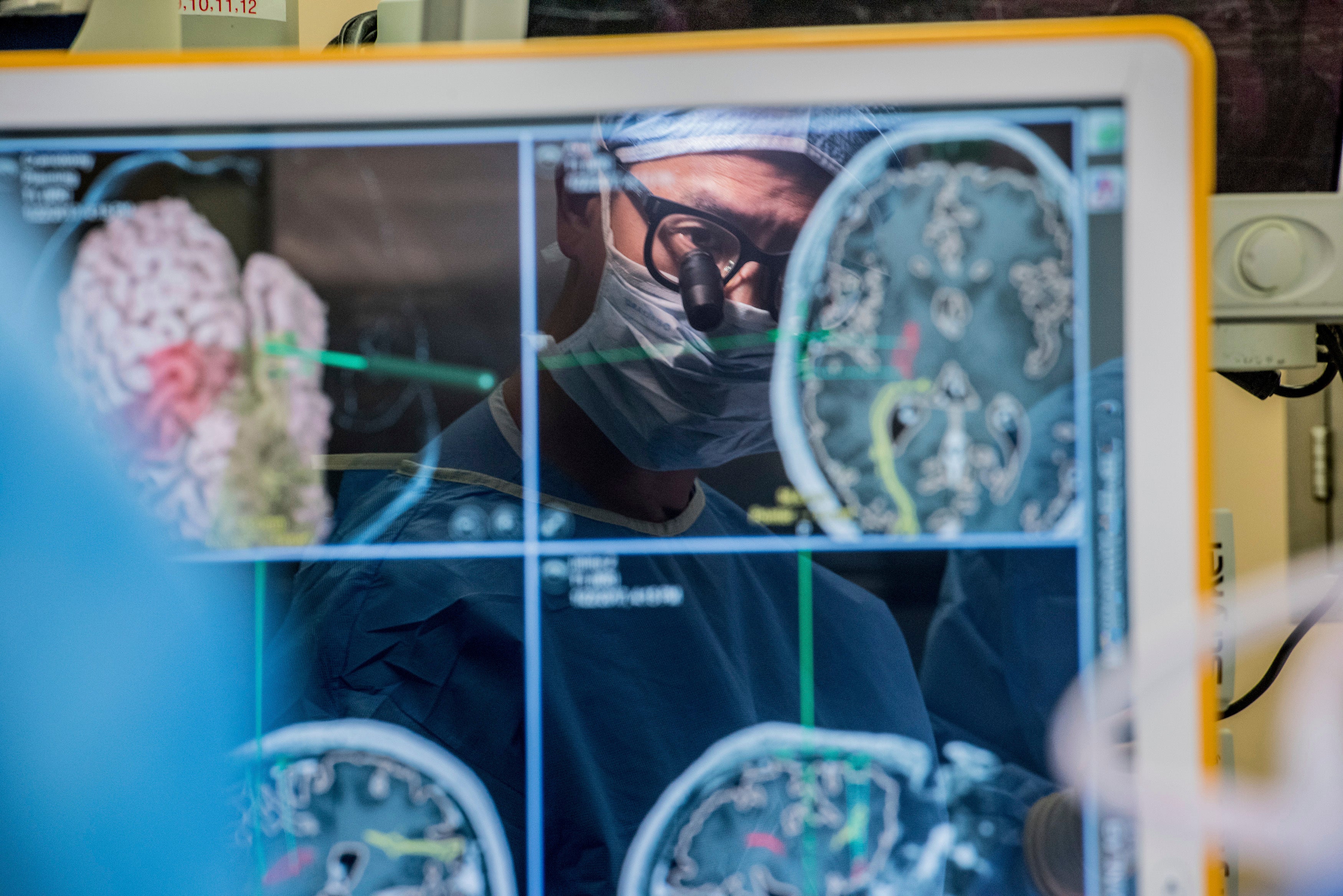Device taps brain waves to help paralyzed man communicate
In a medical first, researchers have harnessed the brain waves of a paralyzed man unable to speak to help him communicate better

Your support helps us to tell the story
From reproductive rights to climate change to Big Tech, The Independent is on the ground when the story is developing. Whether it's investigating the financials of Elon Musk's pro-Trump PAC or producing our latest documentary, 'The A Word', which shines a light on the American women fighting for reproductive rights, we know how important it is to parse out the facts from the messaging.
At such a critical moment in US history, we need reporters on the ground. Your donation allows us to keep sending journalists to speak to both sides of the story.
The Independent is trusted by Americans across the entire political spectrum. And unlike many other quality news outlets, we choose not to lock Americans out of our reporting and analysis with paywalls. We believe quality journalism should be available to everyone, paid for by those who can afford it.
Your support makes all the difference.In a medical first, researchers harnessed the brain waves of a paralyzed man unable to speak — and turned what he intended to say into sentences on a computer screen.
It will take years of additional research but the study, reported Wednesday, marks an important step toward one day restoring more natural communication for people who can’t talk because of injury or illness.
“Most of us take for granted how easily we communicate through speech,” said Dr. Edward Chang, a neurosurgeon at the University of California, San Francisco, who led the work. “It’s exciting to think we’re at the very beginning of a new chapter, a new field” to ease the devastation of patients who lost that ability.
Today, people who can’t speak or write because of paralysis have very limited ways of communicating. For example, the man in the experiment, who was not identified to protect his privacy, uses a pointer attached to a baseball cap that lets him move his head to touch words or letters on a screen. Other devices can pick up patients’ eye movements. But it’s a frustratingly slow and limited substitution for speech.
Tapping brain signals to work around a disability is a hot field. In recent years, experiments with mind-controlled prosthetics have allowed paralyzed people to shake hands or take a drink using a robotic arm -- they imagine moving and those brain signals are relayed through a computer to the artificial limb.
Chang’s team built on that work to develop a “speech neuroprosthetic” -- decoding brain waves that normally control the vocal tract, the tiny muscle movements of the lips, jaw, tongue and larynx that form each consonant and vowel.
Volunteering to test the device was a man in his late 30s who 15 years ago suffered a brain-stem stroke that caused widespread paralysis and robbed him of speech. The researchers implanted electrodes on the surface of the man’s brain, over the area that controls speech.
A computer analyzed the patterns when he attempted to say common words such as “water” or “good,” eventually becoming able to differentiate between 50 words that could generate more than 1,000 sentences.
Prompted with such questions as “How are you today?” or “Are you thirsty” the device eventually enabled the man to answer “I am very good” or “No I am not thirsty” -- not voicing the words but translating them into text, the team reported in the New England Journal of Medicine.
It takes about three to four seconds for the word to appear on the screen after the man tries to say it, said lead author David Moses, an engineer in Chang’s lab. That’s not nearly as fast as speaking but quicker than tapping out a response.
In an accompanying editorial, Harvard neurologists Leigh Hochberg and Sydney Cash called the work a “pioneering demonstration.”
They suggested improvements but said if the technology pans out it eventually could help people with injuries, strokes or illnesses like Lou Gehrig’s disease whose “brains prepare messages for delivery but those messages are trapped.”
Chang’s lab has spent years mapping the brain activity that leads to speech. First, researchers temporarily placed electrodes in the brains of volunteers undergoing surgery for epilepsy, so they could match brain activity to spoken words.
Only then was it time to try the experiment with someone unable to speak. How did they know the device interpreted his words correctly? They started by having him try to say specific sentences such as, “Please bring my glasses,” rather than answering open-ended questions until the machine translated accurately most of the time.
Next steps include ways to improve the device’s speed, accuracy and vocabulary size — and maybe one day allow a computer-generated voice rather than text on a screen — while testing a small number of additional volunteers.
___
The Associated Press Health and Science Department receives support from the Howard Hughes Medical Institute’s Department of Science Education. The AP is solely responsible for all content.